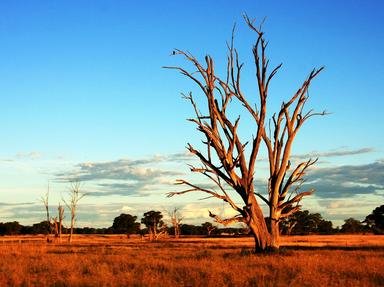Quiz Answer Key and Fun Facts
1. Mining towns in Australia are generally small and located in the outback as they are built ostensibly to serve the nearby mining activity. Coober Pedy in inland South Australia is no exception but the residents here have a unique way of beating the heat. How?
2. Mt Isa is a thriving mining town in outback Queensland. Which one of the following statements about Mt Isa is *NOT* true?
3. Weipa may be on the coast but with approximately 3000 people it is the largest town on Queensland's Cape York Peninsula. What type of mining takes place here?
4. Australia has been in the top five coal producing nations for decades. Which one of the following towns/cities is *NOT* a coal mining town?
5. The gold rushes of the 1850s in Australia transformed Australia from a penal colony to a more progressive society as free immigrants flooded into Australia to make their fortunes. Two of Victoria's biggest cities were founded in the 1850s gold rushes. Which two cities?
6. Tom Price is one of several iron ore mining towns in the north of Western Australia. At 2460 feet above sea level it is the highest town in WA.
True or False. Tom Price is known as the "Top town in Western Australia".
7. Broken Hill is situated in far west New South Wales. It is the oldest continuing mining town in Australia. What are the major mineral(s) mined there?
8. The Argyle Diamond Mine is a diamond mine located in the north of Western Australia. This mine is the largest diamond producer in the world by volume.
True or False: The township situated next to the mine is called Argyle River.
9. Roxby Downs, in north central South Australia, was a purpose built town to service the nearby Olympic Dam mine. The mine has the largest production of copper from a single mine in Australia. What other perhaps controversial mineral is mined there?
10. Kalgoorlie in Western Australia has always been a prolific gold producer. Where in WA is it actually located?
Source: Author
1nn1
This quiz was reviewed by FunTrivia editor
agony before going online.
Any errors found in FunTrivia content are routinely corrected through our feedback system.
